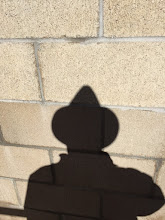Bible Characters 6.6.2024
For many people, their introduction to Scripture is the broad array of human characters who populate the Bible Stories we first learned as children. Our parents or grandparents read these stories to us when young and we learned to identify with the men, women, and even children who populated those stories. For many, if not most Free-Church protestants like us Sunday School is where we took our next step at understanding the Word of God through the eyes of the place, things, and especially people described.
The medium was still largely through the process of hearing and reacting to the story as a story. Much of the impact was mediated to us as an understanding of how God worked in the places and things in the story but most importantly the people. In Sunday school we first began to identify with Biblical characters in such a way that we could admire as heroes those who behaved heroically and avoid as villains those who behaved villainously. When I attended Sunday School in the late 1960s and early 1970s, two factors shaped this experience. First was the production of “Sunday School” literature. This allowed teacher selection (particularly for children) to be broader and more inclusive. Many children were taught by compassionate men and women who would have otherwise felt unable, save for the quarterly that did all the heavy lifting, allowing them to be nurturing and directive. The second factor, derived from the same companies that provided lessons was the visuals…Yes, flannel graph. With the growth of Television, children were becoming more accustomed to seeing as well as hearing stories told. The flannel graph may have been simplistic, (by design) but it was effective.
To this day as children move through their adolescence, teens, and early adulthood their introduction to Christian literature, tends to be a graded approach to the Scripture learning the nature and character of God through the experiences of people whose nature and character are shaped through their interactions with God recorded in scripture.
For many who were raised like this, Bathsheba comes as quite a shock! Not for her own sake but for what we learn about David. The shepherd-boy beloved of Sunday School Children had a darker side that more theoretical discussions about the fallen, sinful condition of humanity don’t quite capture. So, we begin to learn that the central plot of scripture revolves, not around heroic human behavior but around our sinful nature and the need for redemption.
In addition to David’s shortcomings, we are taught that before he became a champion for the faith Paul persecuted it. Before being the first Gospel preacher, Peter denied knowing the Lord. The examples could be multiplied but I’ve made the point. Our Sunday School heroes were just as fallen as we, and as much in need of redemption.
This should not discourage us. Despite all the differences of time, place, and culture those Biblical characters share our need for Jesus, the only Biblical hero of impeccable, sinless character. Christian maturity begins with recognizing both characteristics in those whose stories nurtured us as children, convicted us as adults, and still guide our thinking toward the likeness of Jesus, whose heroic citation consists of conspicuous scars upon His hands, His feet, and His side.


0 Comments:
Post a Comment
Subscribe to Post Comments [Atom]
<< Home